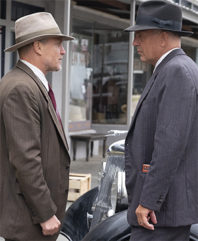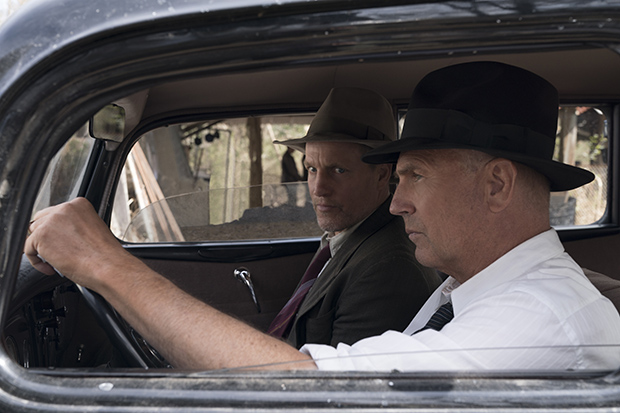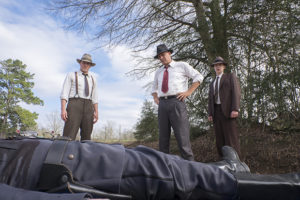
I’ve been watching a few films dealing either with the history or art of the 1960s. John Lee Hancock’s The Highwaymen is the second of those films. It’s about the titular rangers who brought down Bonnie and Clyde. The 1968 film mostly represents these rangers through the bullets raining down on the notorious bank robbers. But as other critics have said before, this new film serves as a historical counterpoint. It’s been fifty years after the anti-establishment era of Hollywood. Supposedly, it’s time for the establishment to tell their story. Their first strategy is to show these robbers as fashionable yet very flawed.
Hancock cast Emily Brobst and Edward Bossert as the criminal duo, portraying them as body parts and shadows. That’s especially true for Brobst as Bonnie, who we first see, if we see any of her, leafing through movie fan magazines. Eventually she steps out of her car, breaking out her associates from a chain gang. The message here is clear enough, that young people like her want celebrity so much that they’ll even kill for it. We always have, apparently. Their shooting sprees captured the zeitgeist because of how the media reported these events. They weren’t just bank robbers, they also manipulated the media.

The film shows headlines of Bonnie and Clyde reaching out to people like Henry Ford to gain more popularity. If anything, their media darling status reflects populist heroes today. But obviously, social media didn’t exist then. The image that Bonnie and Clyde are purporting is stronger than any, smaller counter narrative against them. The only people who know the truth are the good old highwaymen. And what better person than Frank Hamer. Kevin Costner here does his best, bringing an older version of his 80s all-American idealist persona as Hamer. Think Eliot Ness 2.0. Unlike his young, spry antagonists, the legendary Texas Ranger is comfortably enjoying his wife’s Gladys’ (Kim Dickens) money.
History, of course, would have manifested itself differently had he stayed home, but of course he doesn’t. And the conversation propelling his return from retirement is a ‘don’t do the brave thing’ conversation between him and Gladys. John Fusco’s script isn’t a part in solving gangster film and all of film’s woman problem. He could have done better than rehashing these tropes. Speaking of tropes, of course Hamer has an old sidekick in Maney Gault (Woody Harrelson). Fusco’s script shows these two as old men playing with new guns and dealing with new technology. The technology angle comes through with Maney.
Maney specifically has a fascination for the phone lines that are going up even on Bonnie and Clyde’s downtrodden neighborhood. It also surprises him that the FBI can tap those lines to find out the bank robbers’ next moves. All of these characteristics, though, add up to showing that Maney is just the kooky sidekick to Frank’s straight man. It’s as if Harrelson’s doing the opposite of what he did in True Detective. Costner and Harrelson, who are otherwise capable actors, couldn’t shake these characters out from being stereotypes. What ensues is a both a procedural and cat and mouse game between the highwaymen and their psychopathic villains. This drags on longer than it should. It’s as if Hancock and Fusco couldn’t make these otherwise exciting scenes jump off the page.
- Release Date: 3/22/2019

